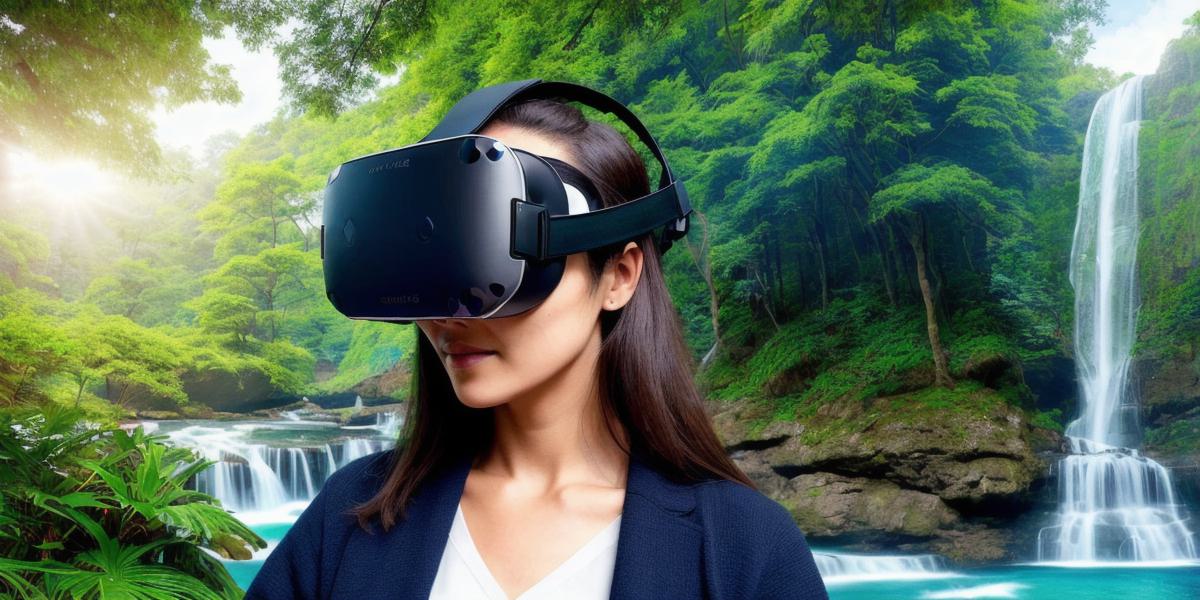Virtual reality (VR) therapy is a revolutionary approach to mental health treatment that has shown promising results for various conditions, including anxiety disorders, depression, post-traumatic stress disorder (PTSD), and phobias. As a simulated reality developer, you have a unique opportunity to contribute to this field by creating immersive experiences that can help individuals overcome their mental health challenges.
Virtual reality therapy works by using computer-generated simulations to create an environment that mimics real-life situations or environments. This immersive experience allows individuals to confront and process their fears and anxieties in a controlled and safe setting. In this article, we will explore the benefits of virtual reality therapy, case studies of its use, and how you can contribute to this field as a simulated reality developer.
Benefits of Virtual Reality Therapy
Virtual reality therapy has several advantages over traditional mental health treatments such as talk therapy or medication. These include:
-
Immersive Experience: VR therapy provides an immersive experience that allows individuals to confront and process their fears and anxieties in a controlled environment.
-
Customizable Experience: VR therapy can be customized to suit individual needs, allowing for more personalized treatment.
-
Cost-Effective: VR therapy can be cost-effective compared to traditional mental health treatments, as it requires less equipment and personnel.
-
Safe Environment: VR therapy provides a safe environment where individuals can confront and process their fears without the risk of harm or danger.
Case Studies of Virtual Reality Therapy
Virtual reality therapy has been shown to be effective in treating various mental health conditions. Here are some case studies that illustrate its potential:
-
Anxiety Disorders: VR therapy has been shown to be effective in treating anxiety disorders such as social anxiety disorder and generalized anxiety disorder. A study published in the Journal of Anxiety Disorders found that individuals who received VR exposure therapy had significant reductions in anxiety symptoms compared to those who received traditional therapy.
-
Depression: VR therapy has been shown to be effective in treating depression by providing a safe and controlled environment for individuals to confront their fears and anxieties.
-
PTSD: VR therapy has been shown to be effective in treating PTSD by exposing individuals to controlled simulations of traumatic events, allowing them to process and overcome their fears and anxieties.
Contributing as a Simulated Reality Developer
As a simulated reality developer, you have a unique opportunity to contribute to the field of virtual reality therapy. Here are some ways you can do so:
-
Develop Immersive Experiences: Create immersive experiences that mimic real-life situations or environments, providing individuals with a safe and controlled environment to confront their fears and anxieties.
-
Collaborate with Mental Health Professionals: Work with mental health professionals to create customized experiences that suit individual needs and treatment goals.
-
Conduct Research: Contribute to the scientific understanding of virtual reality therapy by conducting research on its effectiveness and potential applications.
Summary
Virtual reality therapy is a promising approach to mental health treatment that has shown promising results for various conditions. As a simulated reality developer, you have a unique opportunity to contribute to this field by creating immersive experiences that can help individuals overcome their mental health challenges. By working with mental health professionals and conducting research, you can help revolutionize the way we approach mental health treatment.
